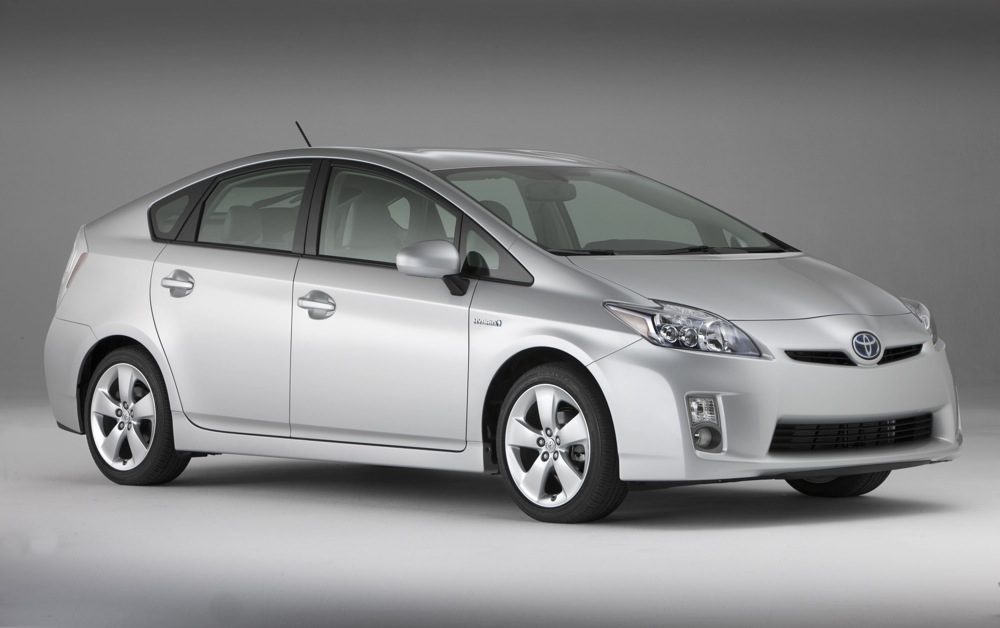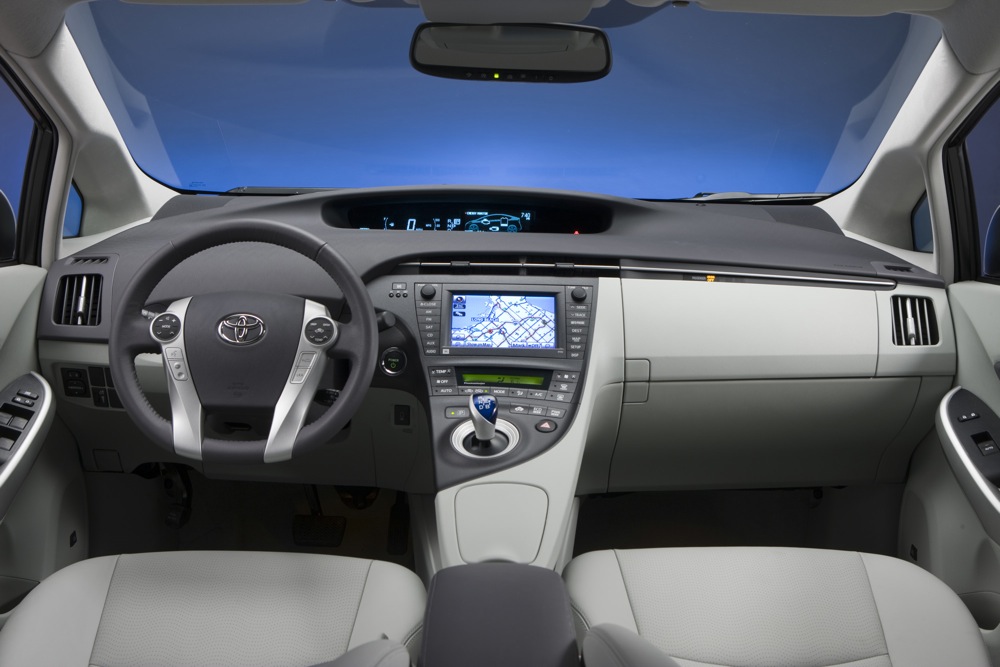The Toyota Prius is by far the most common hybrid car on U.S. roads, which means there are a lot of them out there for sale as used cars.
A reader wrote to ask what she should keep in mind when starting to shop for a used Toyota Prius hybrid.
What follows are some quick notes from our editors, who've collectively owned or driven more than a dozen Priuses.

2009 Toyota Prius
Please note this is not a comprehensive look at buying a used Prius, but more our top-line thoughts on what she should keep in mind.
In the end, we suggested she consider getting a used Prius with only 3-4 years on it and the lowest total mileage she can find, which will give her several years of service with no worry about battery life.
(1) Make sure you like the Prius driving experience before you sign on the line
Driving a Toyota Prius is a different experience than driving a conventional car, and if you've never been in a hybrid before, you should spend a minimum of 30 minutes behind the wheel.
Most people get used to the disconnect between the engine speed (and noise) and the road speed. That's a result of the Hybrid Synergy Drive system constantly adjusting the power it draws from the engine and from the battery pack.
It's all in the name of efficiency--that EPA combined rating of 50 mpg for the 2010 and newer cars--but it's definitely different.

2010 Toyota Prius
(2) Decide which generation you want: second (2004-2009) or third (2010-present)
The third-generation cars (2010-present) are most numerous, based on sales, and get somewhat higher gas mileage.
The classic Prius Liftback has been rated at 50 mpg combined (51 mpg city, 48 mpg highway) since its 2010 launch, and most owners report achieving 45 mpg or so in real-world use.
The second generation cars (2004-2009) are still a good bet too, but there are a few things you should know about them.
MORE: 2010 Toyota Prius - full review
The earlier 2004-2009 models are rated (after a 2007 adjustment in EPA calculation methods) at 46 mpg combined (48 mpg city, 45 mpg highway), and most owners get 40 mpg or more.
We'd suggest avoiding the first-generation cars (2000-2003), as they're slow, much smaller inside, and now likely quite high-mileage indeed.
(3) Be aware of 2004-2009 weak spots
From an editor who's owned a 2004 Prius for 10 years and 100,000 miles, we have first-hand experience of the second generation's ownership issues--including six or seven recalls.

2009 Toyota Prius
The latest recall, which is fairly serious, is for potentially damaged or broken steering ties. Another, earlier on, was to trim the accelerator pedal so it couldn't catch on floor mats and produce unintended acceleration.
On the other hand, that car's interior trim quality is not great, and the bumper shields are known to deform easily and pop off more than occasionally.
Finally, the 2004-2009 Prius models don't have either satellite radio or a USB port built in--and local stereo shops will tell you that adding it later is a challenging and pricey task.
(4) Know your battery warranty--which is based on your state
The Prius has a battery warranty of either 8 yrs/100,000 miles or 10 yrs/150,000 miles in California and a dozen or so other states that have adopted its stricter emissions rules.
There's some correlation; Priuses are likely thicker on the ground in states that have adopted California rules--New York, say--than in those that haven't. North Dakota, for example.

2009 Toyota Prius
That warranty, by the way, protects you against complete failure of the battery pack, which costs $2,500 to $3,000 to replace.
It doesn't protect against a slow decline in battery capacity, meaning over time any Prius may use slightly more gasoline as its pack stores marginally less energy.
MORE: Toyota Hybrid Battery Replacement Cost Guide
But don't worry overly about battery life; the nickel-metal-hydride battery pack in a Prius is one of the car's least-frequently replaced parts.
Our 2004 Prius owner has put 100,000 miles on the car, and its gas mileage (41 to 42 mpg) has remained constant over 10 years.

2010 Toyota Prius
(5) Decide what options you want, and which you need
Options are a matter of personal taste, but for the current generation (2010-now), the Prius Three is the most common trim level.
The Prius Two is the base model, and the Four and Five are high-tech and high-luxe, respectively, so they will probably come with a premium.
Should you happen to find any truly basic Prius One models sold used by fleets, avoid them--they're missing a LOT of otherwise standard equipment, including cruise control, the EV electric-only mode, and a rear-window wiper.
Pearl Jam Syndrome?
We'll leave it to High Gear Media editorial director Marty Padgett to give us the last word on Prius ownership.

2012 Toyota Prius Plug-In Hybrid - production model
"Collectively, new Prius owners may now feel like Nineties alt-rock bands," he mused. "We had our day, but there's definitely cooler stuff out there now. It's Pearl Jam Syndrome."
Wait, cooler than a Prius? Whatever could he mean?
HINT: It comes with a plug.
_______________________________________________













